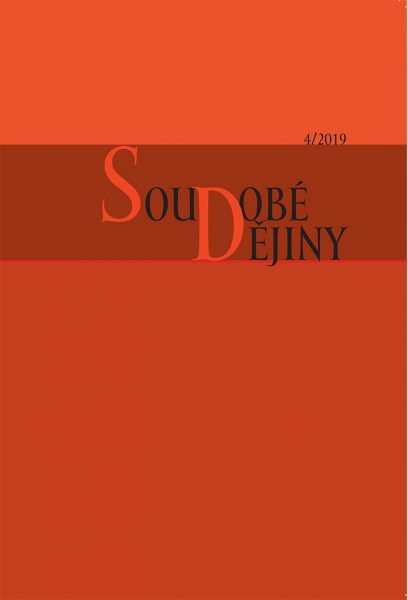Ukrajinský faktor pražského jara?
The Ukrainian factor of the Prague Spring?
Petro Shelest and the Czechoslovak year 1968 in the light of documents of the Secret Police of the Ukrainian Soviet Socialist Republic
Author(s): Luboš VeselýSubject(s): History, Political history, Recent History (1900 till today), Post-War period (1950 - 1989), History of Communism, Cold-War History
Published by: AV ČR - Akademie věd České republiky - Ústav pro soudobé dějiny
Keywords: Ukraine; Czechoslovakia; Prague Spring 1968; Petro Shelest; Soviet intervention; KGB
Summary/Abstract: Petro Shelest (1908–1997), the First Secretary of the Communist Party of the Ukrainian Soviet Socialist Republic and a member of the Politburo of the Central Committee of the Communist Party of the Soviet Union, was one of the strongest advocates of an armed invasion of Czechoslovakia among Soviet leaders in 1968. The Soviet leadership tasked him to maintain contacts with the so-called healthy forces in the Communist Party of Czechoslovakia; in the beginning of August, Secretary of the Central Committee of the Communist Party of Czechoslovakia Vasil Biľak (1917–2014) secretly handed over to him the notorious “letter of invitation” in public lavatories in Bratislava. The author asks a fundamental question whether it is possible to identify a specific Ukrainian factor which stepped into the Prague Spring process and contributed to its tragic end. He attempts to capture Shelest’s position in the decision-making process and describe information that Shelest was working with. To this end, he has made use of reports of the Committee for State Security (Komitet gosudarstvennoi bezopasnosti – KGB) of the Ukrainian Soviet Socialist Republic on developments in Czechoslovakia and reactions thereto among Ukrainian citizens produced in the spring and summer of 1968, which were being sent to Shelest and other Ukrainian leaders. These documents have lately been made available in Ukrainian archives and partly published on the website of the Institute for the Study of Totalitarian Regimes. Their analysis brings the author to a conclusion that they were offering a considerably distorted picture of the situation. Instead of relevant information and analyses, they only present various clichés, ideological rhetoric, inaccuracies, or downright nonsenses. Their source were often members of the Czechoslovak State Security who were often motivated by worries about their own careers and existence and were acting on their own. The uncritical acceptance of the documents contributed to a situation in which in the leader of the Ukrainian Communists and other Soviet representatives were creating unrealistic pictures of the events taking place in Czechoslovakia, believing that anti-socialist forces were winning, anti-Soviet propaganda was prevailing, and Western intelligence agencies were strengthening their position in Czechoslovakia, and that there was a threat that the events that had taken place in Hungary in 1956 would repeat themselves again. As indicated by his published diary entries and other documents, Petro Shelest was using these allegations both in discussions inside his own party and during negotiations with Czechoslovak politicians. Just like in the case of the leaders of Polish and East German Communists, Władysław Gomułka and Walter Ulbricht, respectively, the principal reason why Shelest was promoting a solution of the Czechoslovak crisis by force was, in the author’s opinion, his fear of “contagion” of his own society by events taking place in Czechoslovakia which the Ukraine shared a border with.
Journal: Soudobé Dějiny
- Issue Year: XXVI/2019
- Issue No: 4
- Page Range: 558-584
- Page Count: 27
- Language: Czech

